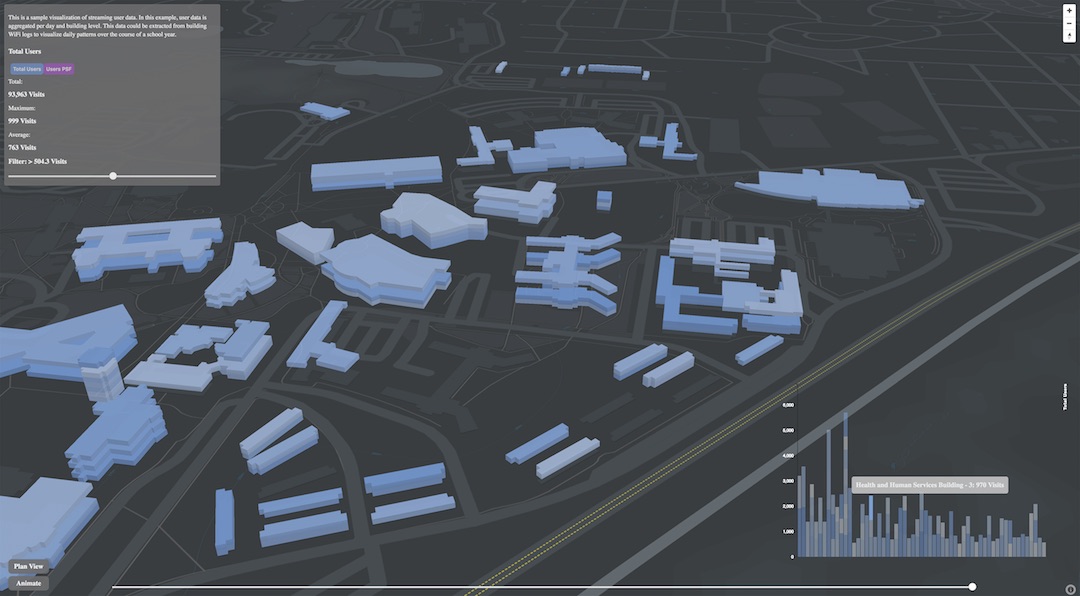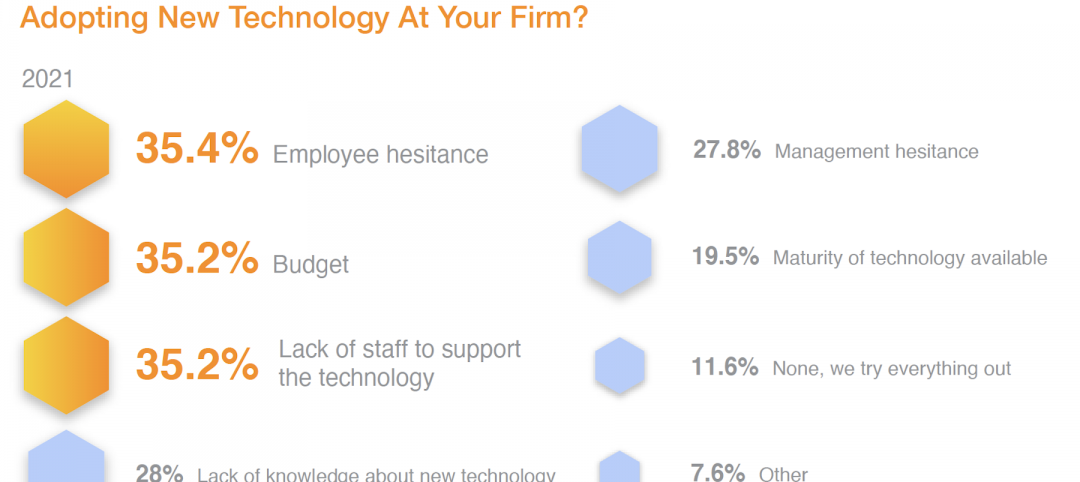Tip of the spear. Cutting edge. Vanguard. These are not words anyone would associate with the construction industry. And when it comes to the nascent technology of artificial intelligence, the construction industry is right near the bottom for both current and future AI adoption.
According to a McKinsey & Company report, only the travel and tourism and professional services sectors have a lower percentage of firms adopting one or more AI technologies at scale or in a core part of their business. When it comes to the average estimated percentage change in AI spending over the next three years, it only gets worse for the construction industry: it’s dead last.
Being last isn’t always such a bad thing, however. Just like how the youngest child gets to watch their older siblings grow up and learn from their mistakes and capitalize on their successes, the construction industry can look at how other industries are leveraging AI, what works and what doesn’t, and take the fast-track to AI dominance.
The McKinsey report identified five current AI applications being used by other industries that could cause an immediate impact in the construction sector:
• Transportation route optimization algorithms for project planning optimization
• Pharmaceutical outcomes prediction for constructability issues
• Retail supply chain optimization for materials and inventory management
• Robotics for modular or prefabrication construction and 3D printing
• Healthcare image recognition for risk and safety management.
In each of these instances, the construction sector would benefit from the work other industries and sectors are putting in to develop the technology. All construction firms would have to do is swoop in and perfect the technology for their own purposes—easier said than done, but still a better option than starting from scratch.
Related Stories
AEC Tech | Jan 27, 2023
Key takeaways from Autodesk University 2022
Autodesk laid out its long-term vision to drive digital collaboration through cloud-based solutions and emphasized the importance of connecting people, processes and data.
Digital Twin | Nov 21, 2022
An inside look at the airport industry's plan to develop a digital twin guidebook
Zoë Fisher, AIA explores how design strategies are changing the way we deliver and design projects in the post-pandemic world.
BAS and Security | Oct 19, 2022
The biggest cybersecurity threats in commercial real estate, and how to mitigate them
Coleman Wolf, Senior Security Systems Consultant with global engineering firm ESD, outlines the top-three cybersecurity threats to commercial and institutional building owners and property managers, and offers advice on how to deter and defend against hackers.
Sponsored | BIM and Information Technology | Jul 19, 2022
Why Autodesk Tandem is the best fit for your projects
Sponsored | Digital Twin | Jun 24, 2022
Pave the way for better business relationships with digital twins
Smart Buildings | Jun 1, 2022
Taking full advantage of smart building technology
Drew Deatherage of Crux Solutions discusses where owners and AEC firms could do better at optimizing smart technology in building design and operations.
AEC Tech | Apr 19, 2022
VDC maturity and the key to driving better, more predictable outcomes
While more stakeholders across the AEC value chain embrace the concept of virtual design and construction, what is driving the vastly different results that organizations achieve? The answer lies within an assessment of VDC maturity.
BIM and Information Technology | Mar 16, 2022
Construction still lags other industries in use of technology
JBKnowledge’s latest ConTech report asserts that while contractors have made some gains, too many don’t view IT as a priority, to their detriment.
AEC Tech | Dec 16, 2021
Autodesk to Acquire Cloud Based Estimating Company ProEst
Autodesk, Inc. is acquiring ProEst, a cloud-based estimating solution that enables construction teams to create estimates, perform digital takeoffs, generate detailed reports and proposals and manage bid-day processes. Autodesk plans to integrate ProEst with Autodesk Construction Cloud, a comprehensive construction management platform connecting teams, data and workflows across the entire building lifecycle.
















